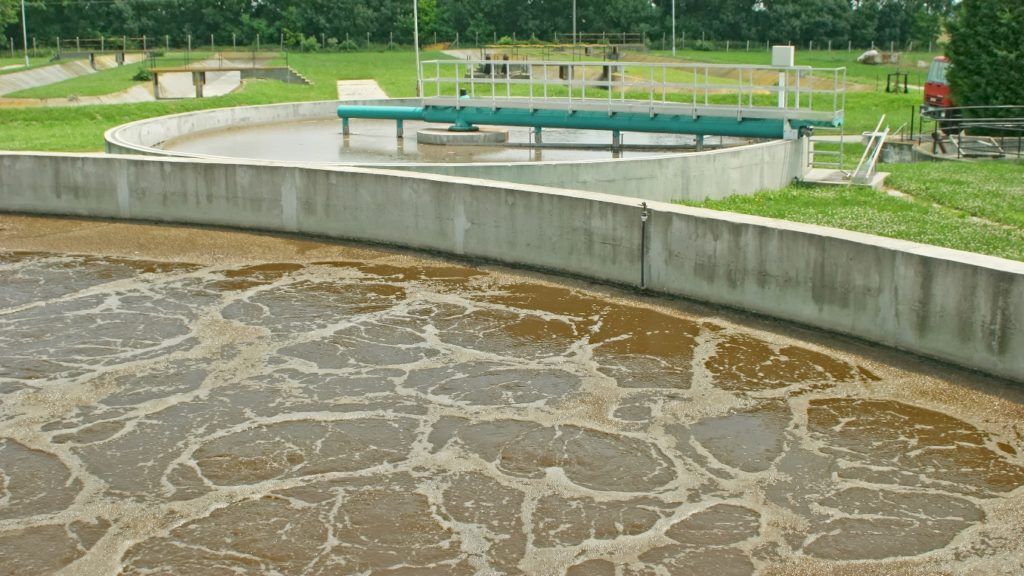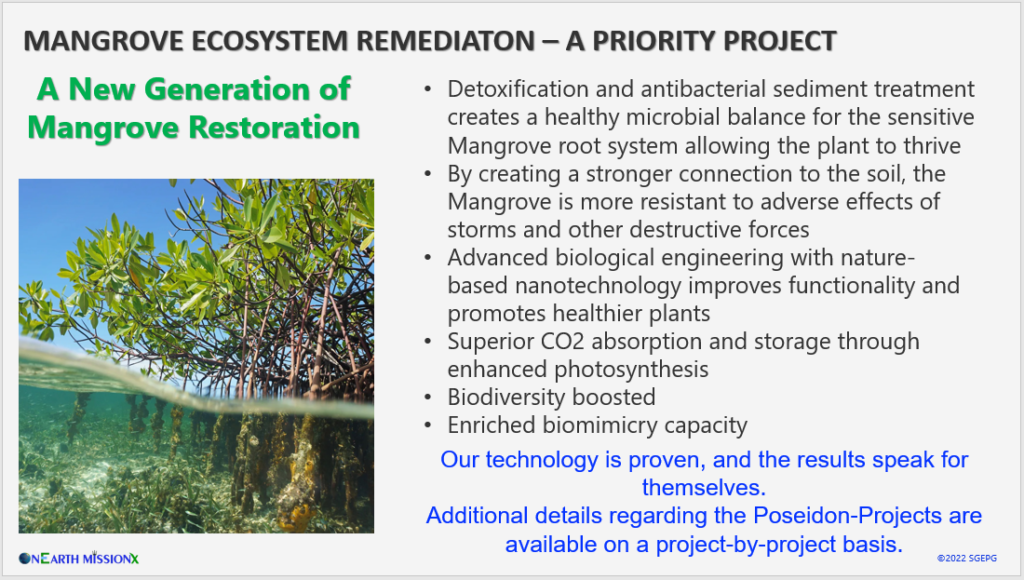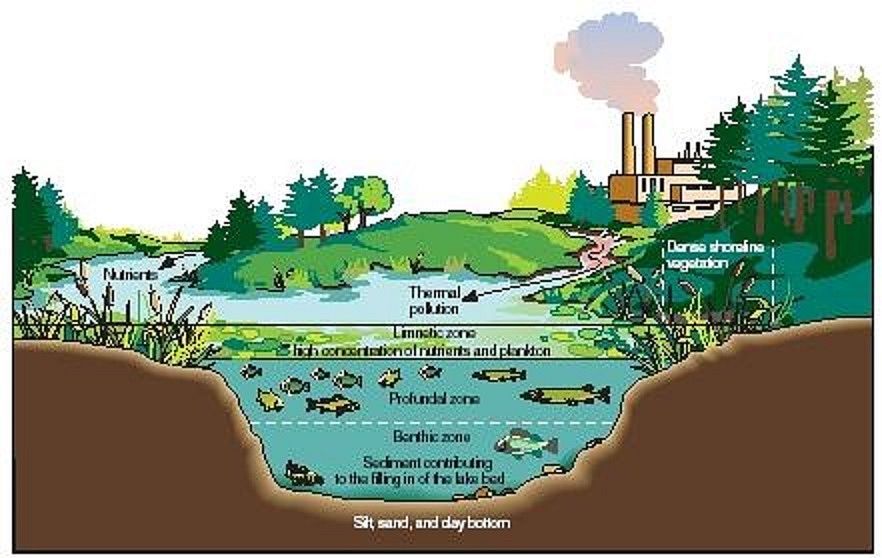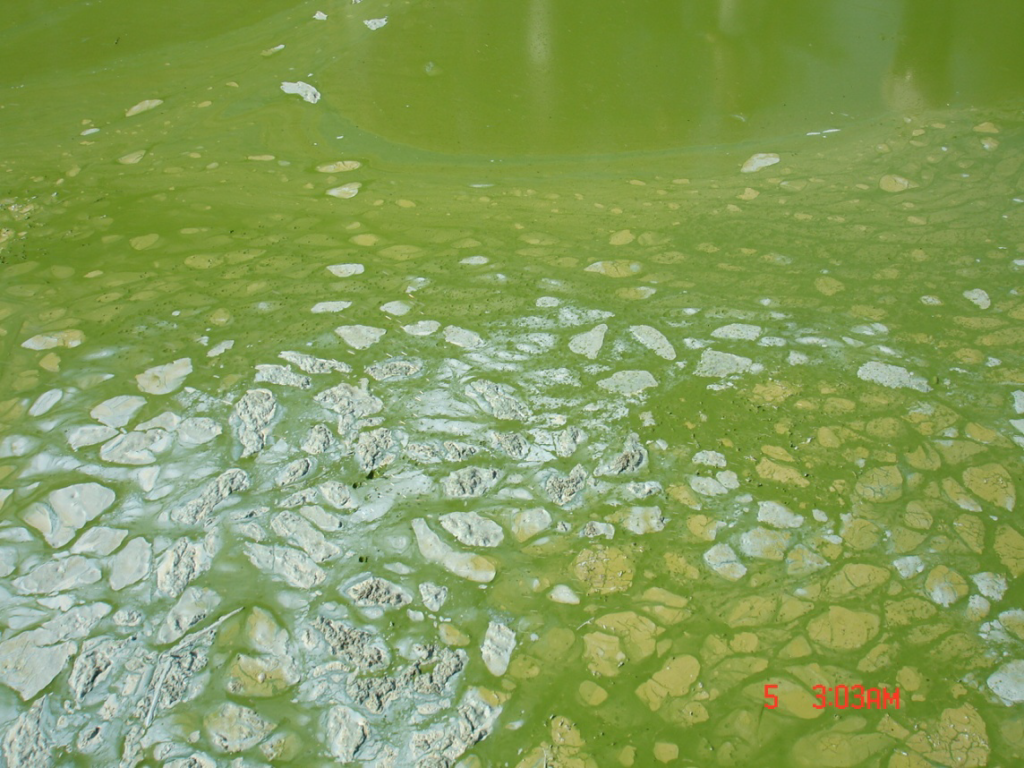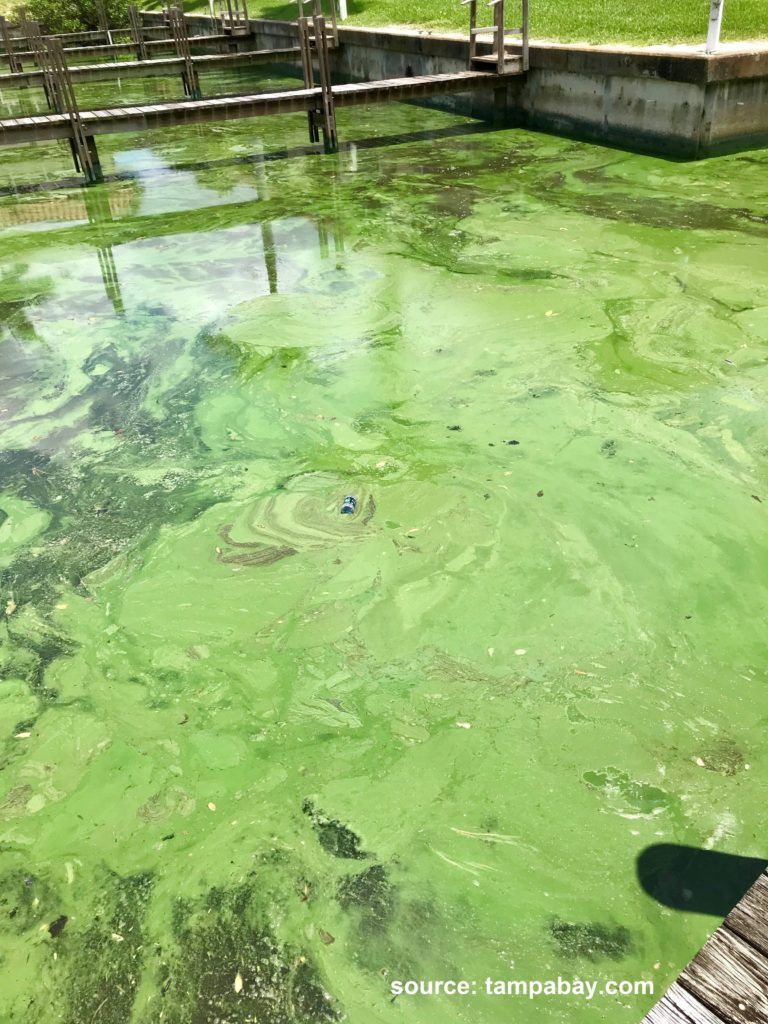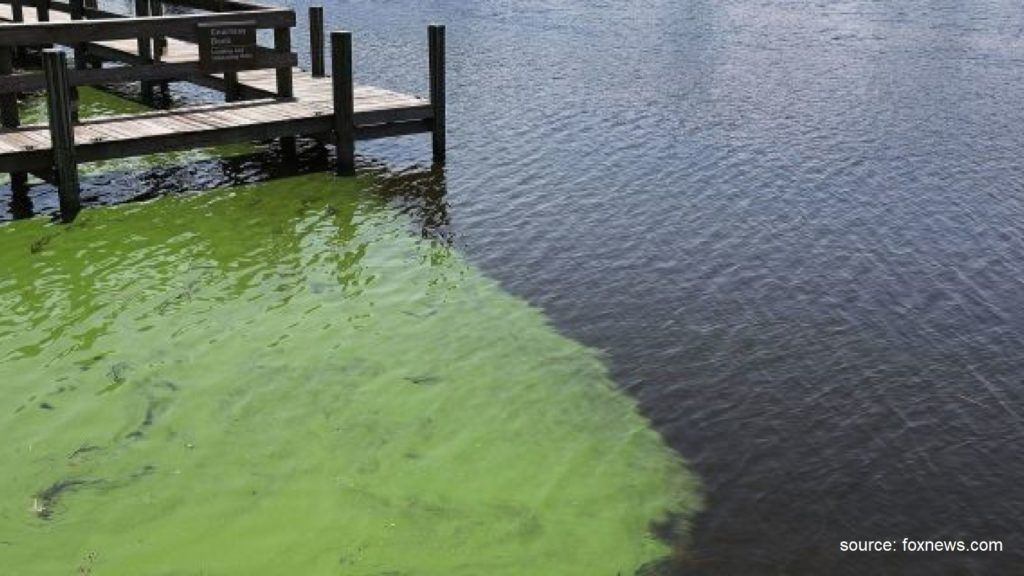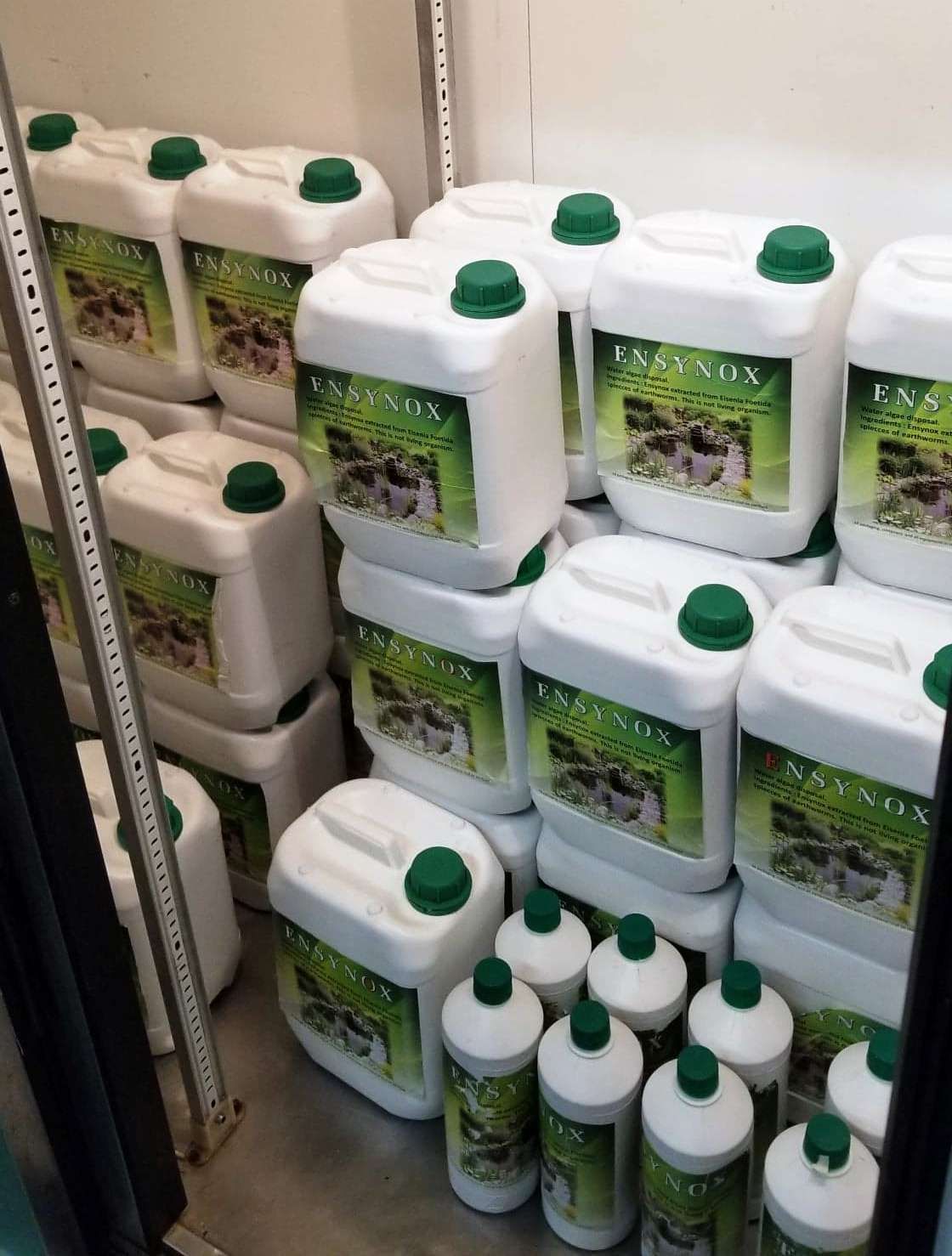Water Treatment
Fighting Against Harmful Algal Bloom
The mechanism of action of the degradation of hazardous substances by Ensynox organic enzymes.
The organic matter degrades the microorganisms present to the aliphatic chain state and degraded to the hydrolytic single-bonded radical -OH to alpha or beta chain carbon and subsequent cleavage.
The liberated hydrogen is oxidized to water, and upon the entry of two more water molecules, the carbons are converted to carbon dioxide and the reactions proceed smoothly, forming shorter and shorter chains until they become water-soluble, ceasing to be dangerous in the water.
Carbon dioxide as one of the end products is cannot be considered a harmful greenhouse gas, because the majority part of it used by phytoplankton and photosynthesizing plant-like microorganisms in the freshwater basin ecosystems in their photosynthesizing process while they produce oxygen. The other beneficial factor of the enzyme-bioremediation agent (called Brainsynox), calcium-rich powder. When the powder formula releases the enzyme and calcium to the aquatic environment on the bottom, the water replenished with calcium. Because calcium has a key role in the photosynthesis process, therefore the usage of carbon dioxide will be intense.
Enzymes cleave their substrate so that they combine with it into a so-called enzyme-substrate complex and then the enzyme and product are formed from this connection. The reaction is balanced it continues until the amount of substrate and product is the same (equimolar).
When the enzymes break down these substances into water-soluble fumes, they will no longer endanger the environment, because the water circulation can dilute them to the point of loss. However, this disturbs the mentioned undesirable balance and the process is repeated until the whole substrate – contaminant is decomposed.
Our greatest passion is to clean up our aquatic ecosystems — the oceans, lakes, rivers, and canals — to make them liveable, viable, healthy environments for people and wildlife.
The Ensynox enzyme reacts with harmful substances such as the toxins of red tide or blue-green algae and neutralizes them, transforming them into harmless material in the biodegradation process.
There are several reasons causing problems in our waters such as high levels of phosphates and nitrates from agricultural lands and industrial, sewage, disasters, oil-spills, etc.
Water Treatment
Eutrophication, the gradual increase in the concentration of phosphorus, nitrogen, and other plant nutrients in an aging aquatic ecosystem such as a lake. The productivity or fertility of such an ecosystem naturally increases as the amount of organic material that can be broken down into nutrients increases. It is an enrichment of water by nutrient salts that causes structural changes to the ecosystem such as: increased production of algae and aquatic plants, depletion of fish species, general deterioration of water quality, and other effects that reduce and preclude use. There are natural and cultural eutrophication.
What Is Our Solution?
Our dual technology enables us to address the problem on the surface, in the water body, and also on the bottom of the water, in the sediment. We identify the problems that are usually coming from:
- agricultural lands because of overfertilization
- municipal wastewater, sewage
- industrial wastewater
In our problem-solving, we not just treat the problems symptomatically but also handle the event as a whole and make steps reducing it at the source based on preliminary analysis. There is a reasonable maintenance service we provide based on further agreements.
Red Tide
Based on tests conducted by an independent, internationally certified laboratory, theEnsynox organic enzyme effectively reacted against red tide; and in different concentrations, it eliminated harmful effects and toxins, while at the same time being harmless to wildlife. Furthermore, marine and water animals are able to recover in therapy with the enzyme because one type of enzymes supports regeneration processes.
Blue Green Algae
Based on a range of international projects effectively carried out using the Ensynox organic enzyme, it has been clearly demonstrated that our enzyme is able to take control and eliminate harmful algal blooms (HAB) and deal with blue-green algae. In a seven day process, the enzyme at first broke down the algae, after that the algae biodegrades and descends to the bottom of the water bed.
Municipal Wastewater Decontamination
Ensynox organic enzyme is very effective in wastewater treatment.
It is cleaning, disinfecting bacterias in the water and also cleaning the sewage sludge through its biodegradation process.
